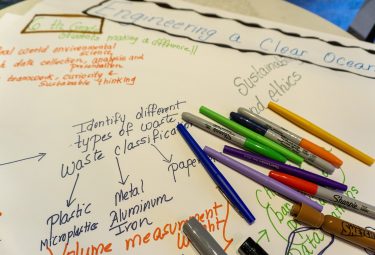Early bird rates are available for registration to the 2026 January ESIP Meeting. Register.
Increasing the Use and Value of Earth Science Data for Whom?
ESIP's 2019 year theme is “Data to Action: Increasing the Use and Value of Earth Science Data and Information.” Working on the ‘use and value’ of Earth science data is obviously an important pursuit and over the course of the Summer Meeting it led me to think about the following question: for whom are we trying to increase use and value? As we continue to see the expansion of cloud platforms like Google Earth Engine, Amazon Web Services and Pangeo-Binder, just to name a few, we likewise are witnessing an increase in the accessibility and usability of large datasets for those data scientists, data managers and earth scientists, who are already well-versed in programming or data management. However, as was evidenced by the Summer Meeting, this target audience continues to be somewhat limited in scope, experience and background. When compared to the Winter Meeting earlier this year, the attendees at the Summer Meeting included a much wider range of disciplines and experience, although this was also likely helped by the fact that the government was open. However, when attending sessions and participating in discussions and workshops, it was apparent that when we talk about the accessibility and usability of data, we as ESIP are mostly still talking about accessibility for people with highly specialized, technical skillsets.
I organized a session at this year’s Summer Meeting which included more domain scientists and a practitioner working on an important sensor network in the Western United States. In talking with these participants about their experience at the meeting it was apparent that even as scientists with years of experience programming and using many different types of geospatial and geosciences data, they felt somewhat out of place or out of the loop in some of the sessions they attended. Furthermore, I attended some sessions on outwardly interesting topics, which were ostensibly relevant to my own work, but then turned out to be working group-type meetings for long established projects. There is nothing inherently wrong with this, after all ESIP is a specialized and important player in the earth science data world. I just think that we as a community could do more to be explicit about these factors and about our intended audience.
There are clearly many exceptions to these observations. For example, Jennifer Hennessey from the Washington State Government and Judy Twedt from the University of Washington both gave terrific plenary talks, each offering a perspective quite different from those seen in many of the other sessions. Likewise, a number of sessions featured ecologists or other domain scientists from data-intensive fields. However, while all of these people have a very high level of technical understanding and knowledge in data science, programming and other related fields, I do not need to reiterate that many in the scientific community and certainly amongst other areas of academia, civil society and government do not.
This contrast leads to an interesting discussion around the target audience for the work ESIP has long been engaged in. It also raises important questions around the role that ESIP plays and should play in acting as a data steward, data broker and communicator. These aspects are highly relevant, particularly as the quantity of data points and the computational power to analyze them continues to grow exponentially. This exponential growth enables us to ask questions at different scales and depth than we were previously able to. This in turn has profound implications for many outside ESIP and the scientific community at large.
One direction I think this discussion can (and arguably should) take is to a consider who our end users are. In a few of the sessions I have attended at ESIP meetings there has been some discussion of policymakers and policymaking. It has been unclear to me, and I think to others in the scientific community as well, how much ESIP and the broader scientific community want to or should engage in any part of the policymaking process. The long-standing pillar of objectivity in the sciences has for decades prevented many scientists from actively participating in the policy making process, and many times for good reason. However, as an organization working on the accessibility and usability of geoscience data, it is a logical topic to engage with. Are we as a community content to publish papers and datasets and let practitioners interpret them? Should we act as simply the brokers of these datasets and research? Or should we go beyond that and step (albeit gingerly) into helping others interpret and understand our results? Or should we, as some have done, actively engage in advocacy efforts on areas crucial to environmental change or human populations? I do not have an answer to these questions, but I know many at ESIP are aware of them and actively thinking about ways forward. As we continue progressing with the goals and work of ESIP and the broader earth sciences community, these are critical considerations to keep in mind.
More about Ben: He is a PhD student in the Geography department at Oregon State University. He is interested in changing snow cover and its impacts on downstream water use in the eastern Columbia River Basin. His research relies on a combination of remote sensing and in-situ monitoring data as well as human water use data to try to build a comprehensive view of these trends. Ben is working as a fellow for the ESIP Lab.



